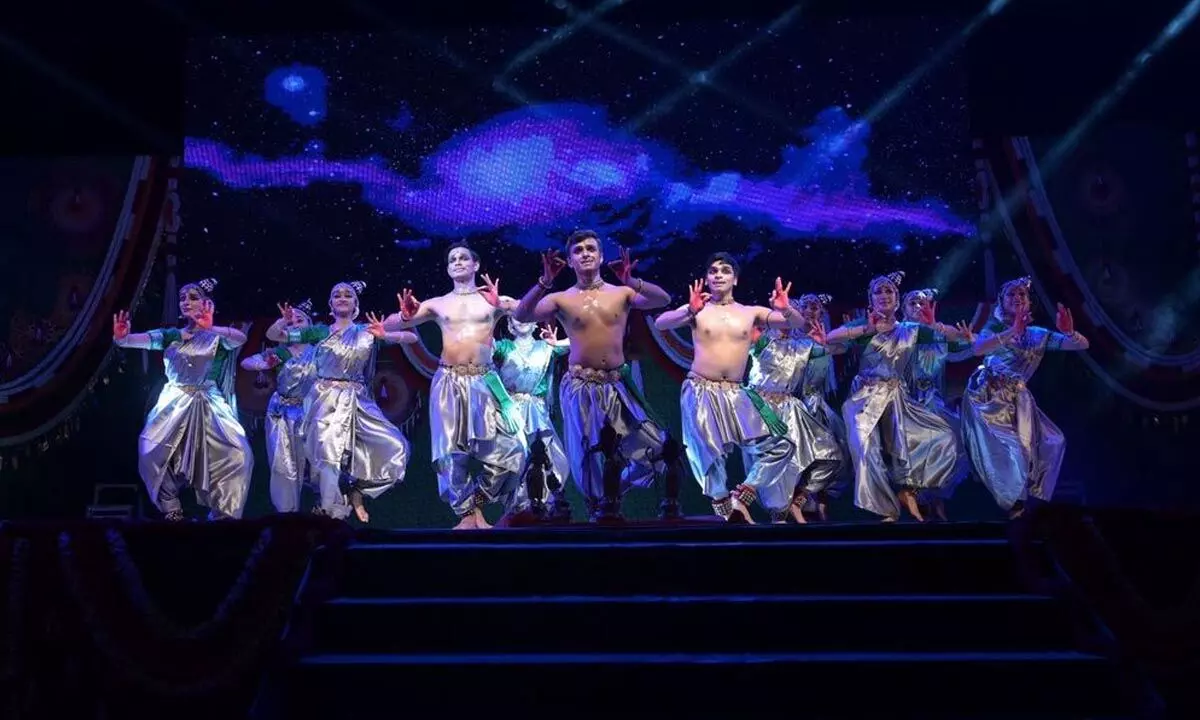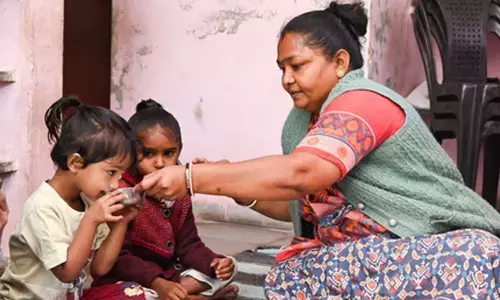Gudi Sambaraalu’s ‘Sanjeevini’ ballet mesmerises audience with divine artistry

Gudi Sambaraalu, the organization dedicated to presenting dance at temples and revivifying cultural heritage through bringing the best of classical arts performers to the Telugu states, outdid themselves with the much-awaited “Sanjeevini” ballet recently performed by Punyah Dance Company.
Gudi Sambaraalu, the organization dedicated to presenting dance at temples and revivifying cultural heritage through bringing the best of classical arts performers to the Telugu states, outdid themselves with the much-awaited “Sanjeevini” ballet recently performed by Punyah Dance Company.
This dance troupe from Bengaluru is one of the most sought-after and features star performers Parshwanath Upadhye, Adithya PV, and twelve other brilliant dancers. The evening air was electric with anticipation at Apollo Amphitheatre, located on the sprawling grounds of Apollo Hospitals, Banjara Hills, as a large audience eagerly awaited the program to begin.
An enthralling discourse by Sri Tridandi Chinna Srimannarayana Ramanuja Jeeyar Swami, which preceded the performance, set the mood. For centuries, Rishis and Sages have not only attained the highest level of the supreme Brahman or the imperishable Self but also guided society on how one can find Paramatma by surrendering to him through dance and music. Sanjeevini (one that infuses life), the magical elixir distilled from the rare plants brought by Hanuman which revives the Heroes, is, for many, metaphorically the chant of Rama Nama and stands as a testimony of unshakable Bhakti.
The ballet meanders through three choreographic works of Parshwanath and Adithya, known for their athletic style of flamboyant leaps and pirouettes, but there was nevertheless a lapidary attention to minute details that made all the difference. Disparate elements which might not harmonize in the hands of less skillful artists were masterfully deployed.
The background of chalk-like sketches for settings was like fine scenic etchings and blended well, highlighting the silhouettes of the dancers against the stark black stage backdrop. Excellent lighting created illusionary three-dimensional visual effects.
1. Agamanam: The Arrival showed the people of Ayodhya awaiting the return of their beloved Rama, Lakshmana, and Sita after fourteen long years in the wilderness and undergoing many travails and perils. The aura of eager longing anticipation crowned with jubilant fulfillment was magical and, indeed, the elixir of life (Sanjeevini) for the distraught people. Both Nritta and Abhinaya are descriptively combined to display the feelings outlined perfectly.
2. Nritya Sanjeevini : Punyah Krishna is the scene when Narada Muni asks Krishna where he can be found when wanted. This question elicits the response that he would be found wherever his devotees are dancing and singing. Again, Sanjeevini, here is the ecstasy of dancing, reliving the leelas for the most handsome Dancer (Krishna) ever born. The item is based on the Krishnashtakam of Adi Sankaracharya.
3. The Confluence : The numerous Aratis that take place everywhere have the power to make the Jeevatma attain Paramatma. Ram Bhajan, sung by Lord Shiva, contains beautiful Sanskrit Mishra Avadhi lyrics. The devotees blissfully merge with Lord Rama in a confluence in this composition. The shimmering metallic silver of the costumes paired with consummately splendid dancing abilities wrought magic to create an unforgettable transcendent evening filled with Sanjeevini indeed!
















